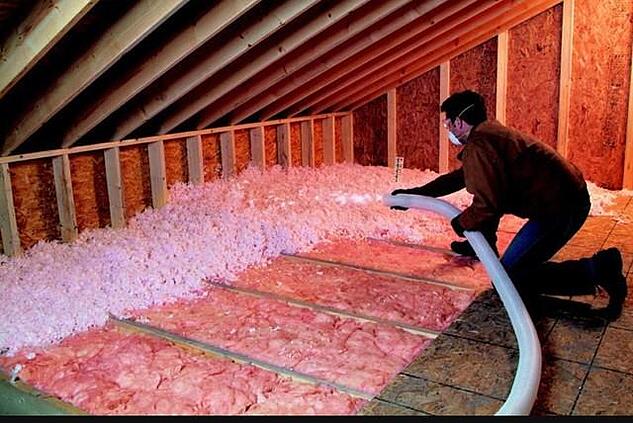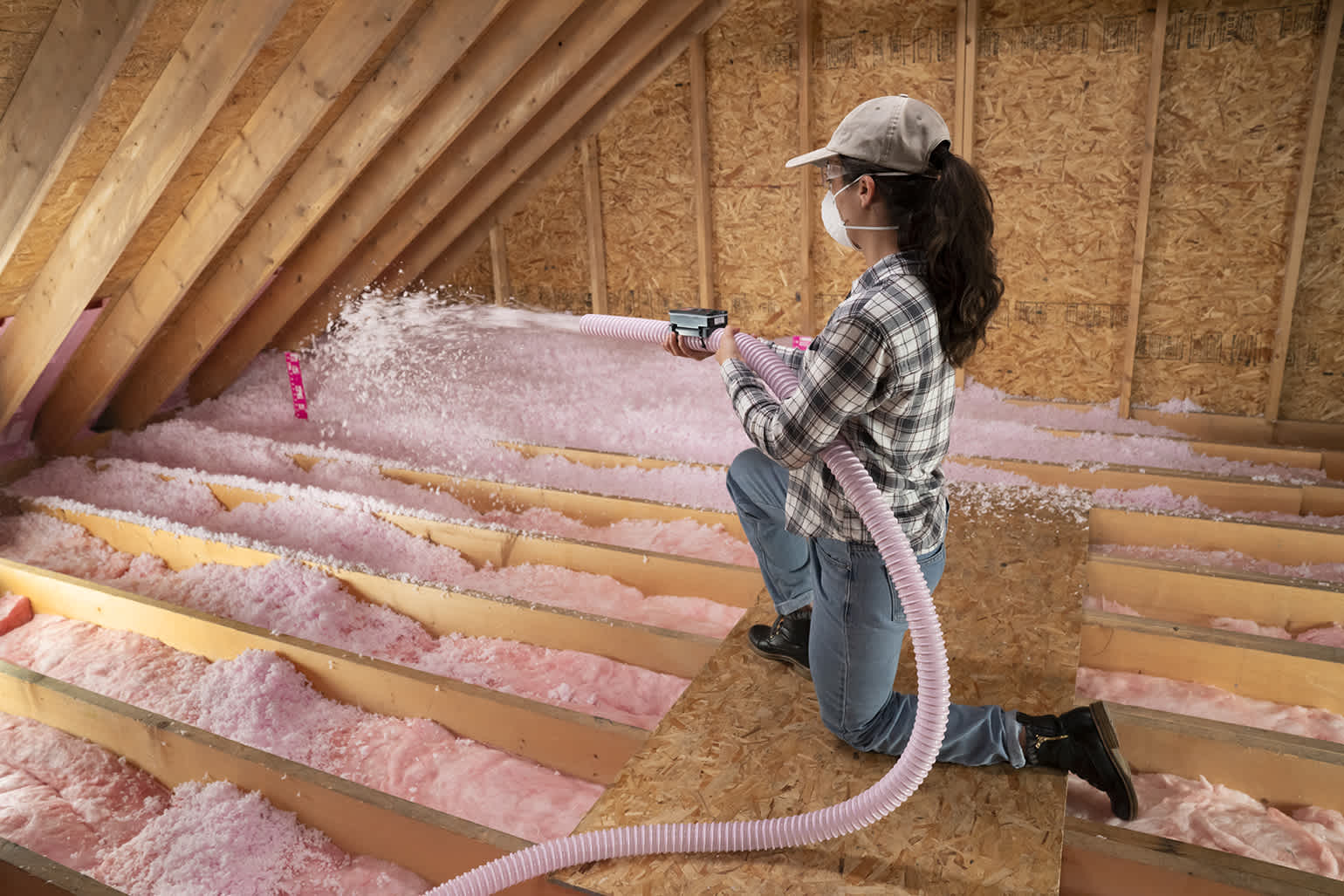Professional Tips for Enhancing Your Home with Attic Insulation DFW
Wiki Article
Discover the Different Kinds Of Attic Insulation and Their Special Benefits for Your Home's Energy Efficiency

Fiberglass Insulation
Fiberglass insulation is one of the most commonly used materials for attic room insulation because of its excellent thermal performance and cost-effectiveness. Made up of small glass fibers, this product successfully catches air, producing a shielding obstacle that aids keep consistent interior temperature levels. Its high R-value per inch makes it especially reliable at withstanding warmth transfer, which is essential for energy conservation in homes.
Installation of fiberglass insulation is reasonably straightforward, usually offered in batts or loose-fill types, accommodating numerous attic room configurations. Additionally, it is immune and non-combustible to dampness, reducing the threat of mold and mildew development. This toughness adds to its long life, making fiberglass a feasible lasting investment for homeowners.
Moreover, fiberglass insulation is commonly manufactured from recycled products, which improves its eco-friendliness. The material can also add to soundproofing, decreasing sound transfer between rooms. While it is important to wear safety equipment throughout installment to prevent irritation from the fibers, the total benefits of fiberglass insulation, including power financial savings and environmental considerations, make it a popular option for boosting attic room efficiency and promoting a comfortable living environment.
Spray Foam Insulation
Spray foam insulation is a very reliable option for attic insulation, understood for its premium air securing and thermal efficiency. This innovative insulation product is composed of a mix of isocyanate and polyol material, which, when combined, expands swiftly to fill up voids and dental caries in the attic room room. Its ability to stick to various surface areas ensures a continual obstacle against air leaks, substantially lowering warm loss during colder months and heat gain throughout warmer seasons.One of the essential advantages of spray foam insulation is its high R-value per inch, which suggests it provides excellent thermal resistance in a relatively slim application. This is particularly useful in attics where area is typically limited. In addition, spray foam can assist reduce dampness accumulation, lowering the danger of mold and mildew growth, which can be harmful to both the structure and interior air quality.
While the preliminary cost of spray foam insulation may be more than conventional options, its long-term power financial savings, paired with enhanced convenience and improved home value, make it a beneficial investment for homeowners looking for improved power performance. Attic Insulation DFW. In general, spray foam insulation stands out as an effective option for maximizing attic room insulation
Cellulose Insulation

Cellulose insulation is a preferred choice for attic room insulation, largely made up of recycled paper items treated with fire resistants. This eco friendly option is known for its superb thermal performance, properly reducing heat transfer in both summer read review season and winter season. The dense composition of cellulose allows it to fill up spaces and voids in attic room rooms, supplying a seamless barrier against air leakages.
One of the substantial benefits of cellulose insulation is its ability to resist mold and insects, owing to the fire resistant treatments used during manufacturing. In addition, it flaunts a high R-value per inch, which translates right into exceptional energy effectiveness. Homeowners can expect reduced cooling and heating prices as a result of boosted insulation.
Setup is normally achieved with blowing loose cellulose into the wanted area, permitting a reliable and quick process. This approach likewise minimizes disturbance to the existing framework. Additionally, cellulose insulation has a fairly low environmental impact, as its manufacturing process utilizes recycled products, adding to lasting structure practices.
Rock Woollen Insulation
Amongst the numerous options for attic room insulation, rock woollen, likewise called mineral woollen, sticks out as a result of its excellent thermal and acoustic performance. Made from natural or recycled materials, rock wool is developed by thawing rock and rotating it right into fibers, resulting in a product that offers superb insulation properties.Among the substantial benefits of rock wool insulation is its high R-value, which shows its effectiveness in withstanding warm flow. This characteristic not only enhances power performance but also contributes to keeping a comfortable indoor temperature year-round. In addition, rock wool is inherently fire-resistant, making it a much safer option for homes as it can endure high temperatures without melting or launching poisonous fumes.
Additionally, rock wool insulation excels in soundproofing capabilities, efficiently lowering sound transmission between areas and from outdoors sources. Overall, rock woollen insulation supplies a comprehensive solution for enhancing energy performance, safety, and comfort in property setups.
Glowing Obstacle Insulation
Radiant barrier insulation acts as a reliable remedy for decreasing heat transfer in attics, particularly in warmer environments. This kind of insulation jobs by showing induction heat far from living areas, therefore decreasing the amount of warm that goes into a home during warm weather - Attic Insulation DFW. Usually made up of a highly reflective product, such as light weight pop over to these guys aluminum foil, glowing barriers are installed in attics, encountering the roofing, where they can obstruct incoming heat from the sunThe key advantage of radiant obstacle insulation is its ability to reduced air conditioning expenses. By reflecting warm instead than absorbing it, radiant obstacles can help preserve a much more secure indoor temperature, decreasing the work on cooling systems. This effectiveness converts into reduced power expenses and boosted comfort for house owners.
get more In addition to energy savings, radiant obstacles can also add to boosted interior air top quality. By decreasing warm accumulation, they assist decrease humidity levels, which can protect against mold and mildew development and boost general air blood circulation. When installed appropriately, radiant barrier insulation can be an important addition to any type of energy-efficient home, making it a worthy factor to consider for house owners looking to improve their attic room insulation method.
Final Thought
Finally, understanding the various kinds of attic insulation-- fiberglass, spray foam, cellulose, rock woollen, and glowing obstacles-- makes it possible for homeowners to make educated decisions pertaining to power efficiency. Each insulation type offers distinct advantages, such as superior thermal resistance, moisture administration, and audio depletion. By picking the proper insulation product, substantial reductions in energy prices can be accomplished, together with enhancements in interior convenience. Inevitably, the right selection adds to a more lasting living setting and promotes total energy conservation.

In conclusion, recognizing the various types of attic room insulation-- fiberglass, spray foam, cellulose, rock wool, and glowing barriers-- allows homeowners to make educated choices relating to power effectiveness.
Report this wiki page